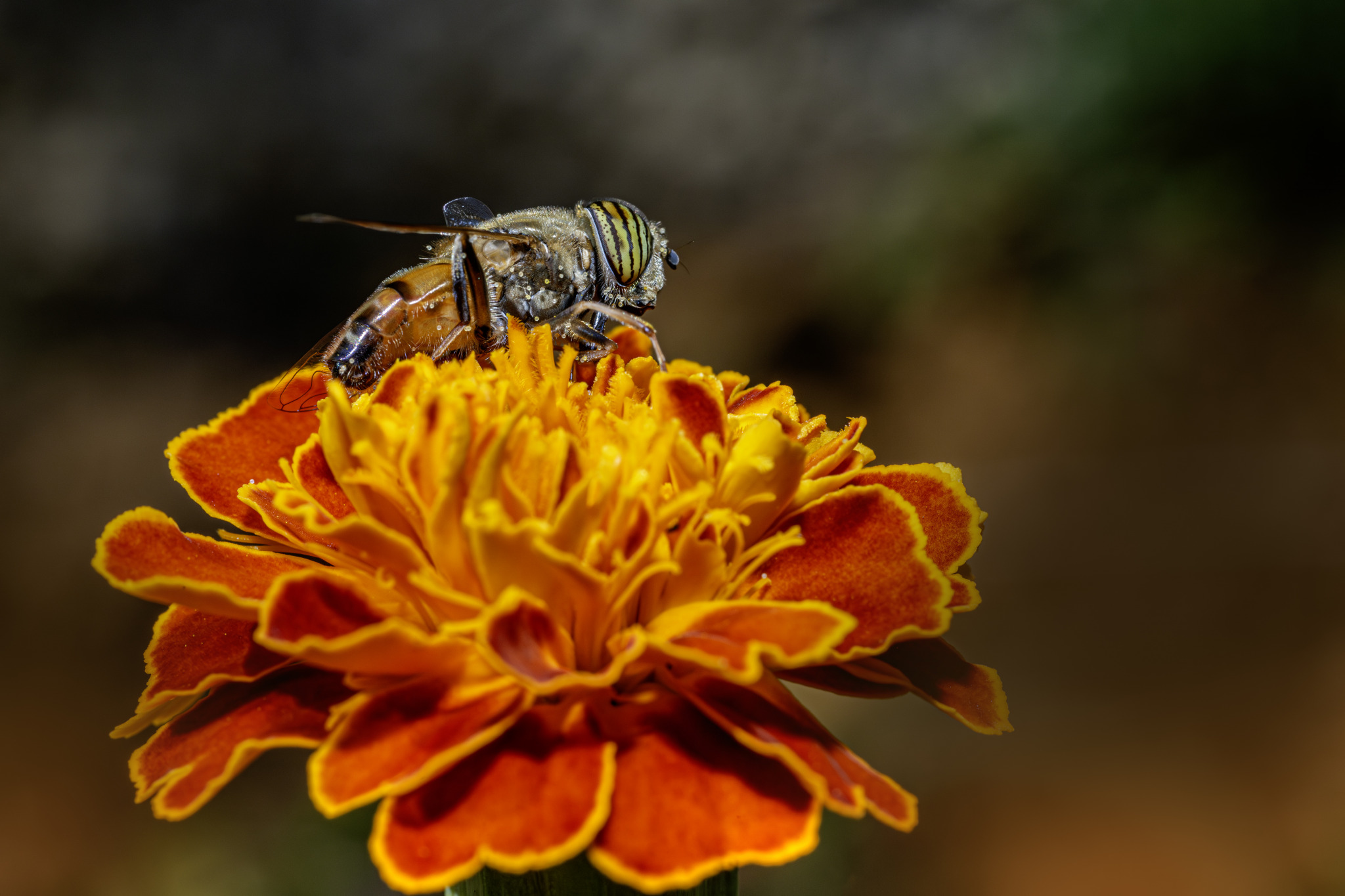The Band-eyed Drone Fly (Eristalinus taeniops) is an intriguing species of hoverfly belonging to the family Syrphidae. Known for its distinctive eye pattern and resemblance to bees, this fly plays a significant role in pollination.
Description
- Appearance:
- Eyes: The most striking feature of the Band-eyed Drone Fly is its large eyes, which are adorned with horizontal bands. These bands give the fly its common name.
- Body: The body is robust and bee-like, with a predominantly dark color interspersed with yellowish markings.
- Wings: The wings are clear but can show a faint pattern of veins, and the fly exhibits the typical hovering flight pattern of hoverflies.
- Size: Adults typically measure between 10 to 12 millimeters in length.
Habitat
- Distribution: This species is widespread, found throughout Europe, the Middle East, and parts of North Africa. It has also been introduced to other regions, including North America.
- Preferred Environment: Band-eyed Drone Flies are commonly found in a variety of habitats, including gardens, meadows, agricultural fields, and wetlands. They prefer areas with abundant flowers and water sources.
Behavior and Ecology
- Diet:
- Adults: The adult flies feed on nectar and pollen from a wide range of flowering plants. This diet not only provides them with energy but also makes them important pollinators.
- Larvae: The larvae, known as rat-tailed maggots, are aquatic and feed on decaying organic matter in stagnant water, such as in ponds, ditches, and marshes.
- Pollination: As they feed on nectar, adult Band-eyed Drone Flies contribute significantly to the pollination of various plants, helping to maintain healthy ecosystems.
- Flight Period: They are typically active from spring through autumn, with peak activity during the warmer months when flowers are most abundant.
Conservation
- Status: The Band-eyed Drone Fly is not currently considered threatened and is common within its range. However, like many pollinators, it can be affected by habitat loss and pesticide use.
- Conservation Efforts: Conservation efforts focus on preserving and restoring habitats rich in flowering plants and maintaining clean water sources to support their larval stages.
Observing Band-eyed Drone Flies
- Best Times: The best time to observe these flies is during their active months from spring to autumn.
- Watching Tips: Look for them hovering around flowers in gardens, meadows, and along water bodies. Their distinctive banded eyes and bee-like appearance make them relatively easy to identify.
Interesting Facts
- Mimicry: The Band-eyed Drone Fly’s resemblance to bees is an example of Batesian mimicry, where a harmless species mimics a more dangerous one to avoid predation.
- Larval Adaptations: The larvae have a distinctive tail-like breathing tube that allows them to thrive in low-oxygen aquatic environments by accessing air at the water’s surface.
- Vision: The horizontal bands on their eyes are not just for show; they play a role in enhancing the fly’s vision, which is crucial for navigating and finding flowers.
Summary
The Band-eyed Drone Fly (Eristalinus taeniops) is a fascinating and beneficial insect known for its distinctive banded eyes and bee-like appearance. This species is an important pollinator, contributing to the health and reproduction of various plants. Observing these flies can provide insight into the intricate relationships within ecosystems and the crucial role of pollinators in maintaining biodiversity. Conservation efforts aimed at protecting their habitats and reducing pesticide use are essential for ensuring their continued presence and ecological contributions.
Views: 354
Subscribe to the newsletter:
